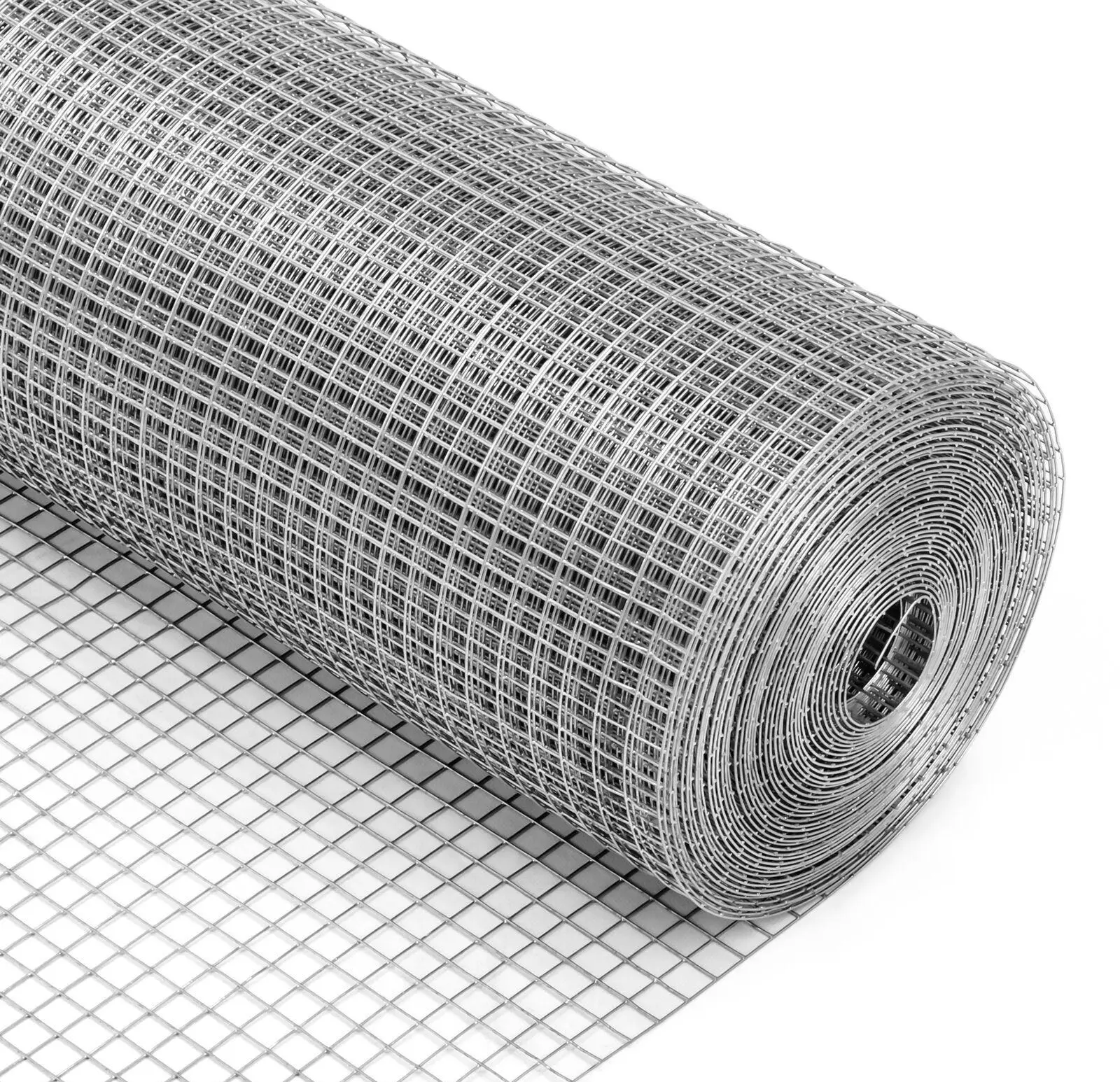Nov . 15, 2025 11:00
Back to list
Steel Net Price Explained: What Influences Cost & Why It Matters Globally
Understanding Steel Net Price: The Backbone of Modern Wire Mesh Industry
Steel net price might sound straightforward at first glance—a simple figure reflecting the cost of steel mesh products. But if you stop and think about it, this single metric ripples through industry decisions, construction budgets, humanitarian aid logistics, and even environmental sustainability strategies. Suddenly it feels less like a mundane statistic and more like a pulse point of global infrastructure and innovation. Globally, steel net price directly influences construction economics, supply chain resilience, and safety standards. For example, the International Organization for Standardization (ISO) sets benchmark guidelines for steel wire mesh quality, indirectly impacting prices worldwide. Similarly, the UN and World Bank report on commodity market trends reveal how fluctuations in steel pricing affect developing economies' access to durable building materials. So, understanding steel net price isn't just for buyers and sellers—it’s crucial for policymakers and humanitarian planners who rely on the material's availability and affordability. ### A Quick Takeaway Knowing steel net price helps industries and communities plan smarter, ensuring materials don’t just arrive—they arrive on time and on budget.The Global Context: Why Steel Net Price Matters More Than Ever
Steel use is massive—the World Steel Association estimated over 1.8 billion tons of crude steel production globally in 2023 alone, much of it processed into various wire mesh and nets. These products range from simple fencing elements to sophisticated reinforcement grids in earthquake-resistant buildings. The price of these nets affects everything from urban renewal projects in Europe to agricultural fencing in sub-Saharan Africa. But here's the kicker: supply chain shocks, tariffs, and raw material shortages keep steel net prices volatile. The pandemic-era disruptions, ongoing geopolitical tensions, and rising carbon emission regulations (remember those from the Paris Agreement?) all tug on these prices. For industry planners or aid organizations, this fluctuation isn’t just a nuisance—it can mean project delays, cost overruns, or lowered quality if cheaper, substandard products are chosen. ### Mini Summary Global steel net price swings reflect wider economic challenges and require savvy purchasing to avoid costly risks downstream.What Exactly Is Steel Net Price?
Simply put, "steel net price" is the final cost of steel wire mesh products after discounts, taxes, and tariffs—but before transportation or installation costs. The term “net” emphasizes that it’s the price buyers expect to pay per unit (often per kilogram or square meter). Steel nets themselves are grids made by welding, weaving, or knitting steel wires into a mesh pattern. These are used widely in construction—think reinforcing concrete or secure fencing—but also in industrial filters, mining screens, and sometimes even creative architectural designs. Behind this, steel net price is a nexus point where raw materials, manufacturing processes, quality control, and market demand meet—a small window into a complex supply chain. ### Mini Takeaway Steel net price = what you pay for quality steel mesh, balancing raw costs and manufacturing finesse.Key Factors Influencing Steel Net Price
Here’s where it gets interesting: multiple components influence your steel net price.1. Material Quality and Grade
Stainless steel nets vs. mild steel? Electro-galvanized wire vs. PVC-coated? These variations significantly affect final pricing. Higher-grade steel often costs more but delivers longer lifespan and corrosion resistance.2. Mesh Size and Wire Thickness
Finer mesh or thicker wire means more material per square meter, naturally raising prices. Oddly enough, sometimes seemingly small changes in gauge drastically swing net costs.3. Manufacturing Process
Welded nets typically cost more than woven because of labor and precision equipment needs. Automation can reduce prices but might limit customization options.4. Volume and Order Size
Bulk buyers score discounts, which can make a big difference for construction firms or suppliers stockpiling materials.5. Geographic Location and Logistics
Prices rise when products ship overseas or to remote areas. Tariffs and customs duties also add another layer of cost.6. Market Demand and Raw Steel Fluctuations
Global steel market ups and downs—affected by energy prices, tariffs, or environmental policy—passively tilt steel net price daily. ### Mini Summary Steel net price isn’t static—it’s shaped by material choices, design specs, production methods, and global market forces.Global Applications of Steel Nets: From Construction to Crisis Relief
Steel nets don’t just sit in warehouses; they’re active parts of several industries worldwide. - Construction and Infrastructure: Used globally for reinforcing concrete slabs, bridges, and retaining walls. Europe and North America lean toward high-grade stainless options for durability. - Agriculture and Livestock: Developing regions like Africa and Southeast Asia use wire mesh to create secure fencing for crops and animals—a cost-effective protection method. - Disaster Relief and Humanitarian Uses: In post-disaster zones, rapid-deploy wire mesh shelters or reinforced temporary structures depend on cost-effective steel nets. - Mining and Industrial Screening: Australia’s mining hubs utilize heavy-duty steel nets for sieving ores, requiring mesh with tight tolerances. One real example: After the 2019 Cyclone Idai in Mozambique, NGOs sourced large quantities of affordable steel mesh fencing (linked to stable steel net prices) to protect medical camps and rebuild community centers. ### Mini Takeaway Steel nets have a global footprint, stabilizing economies and communities in visible and less obvious ways.Advantages of Choosing the Right Steel Nets
Cost Efficiency: When you get your steel net price right, you avoid overpaying—and that often saves thousands on large projects. Durability & Sustainability: Steel’s recyclability adds green value, aligning with ISO 14001 and UN sustainability goals. Safety & Reliability: The sturdiness of good steel nets means peace of mind in construction safety and animal containment. Flexibility & Innovation: Wire mesh can be adapted into custom sizes or coated for special environments. Plus, tech like robotic welding keeps prices competitive. Social Impact: Affordable steel nets enable better infrastructure in underserved regions—building dignity, security, and trust. ### Mini Summary Steel nets deliver tangible benefits beyond price: safety, sustainability, and societal value.Future Trends Shaping Steel Net Price
There’s a lot of change ahead: - Green Steel Initiatives: As companies switch to low-carbon steel production, prices might shift but long-term benefits loom large. - Digital Supply Chains: Blockchain and AI help trace material provenance, potentially reducing fraud-related price inflation. - Automation in Manufacturing: Advanced Robotics lower labor costs and improve quality consistency. - Material Innovation: New coatings or hybrid metals could redefine performance vs. cost. These trends suggest that steel net price will become more transparent and possibly more stable in years to come. ### Mini Takeaway Emerging tech and sustainability focus will refine not just pricing but also how we buy and use steel nets.Facing Challenges: Overcoming Price Volatility and Supply Issues
Common hurdles include unpredictable steel raw material costs, geopolitical tariffs, and transportation bottlenecks. Prices can literally double if materials face sudden export bans or shipping delays. Solutions on the horizon? - Strategic stockpiling and diversified supplier networks ease supply risks. - Closer partnerships between manufacturers and buyers encourage price stabilization. - Innovative financing options, such as indexed contracts, help hedge against fluctuation. Adopting smarter purchasing models is key to weathering the storm.Frequently Asked Questions about Steel Net Price
Q1: Why does steel net price fluctuate so much?A1: It’s mainly due to raw steel input costs, global demand-supply imbalances, tariffs, and logistical factors. Energy prices also influence steelmaking expenses, which cascade down to net pricing. Q2: How can I get the best steel net price without compromising quality?
A2: Buy in bulk from reputable suppliers, specify exact material needs, and consider total lifecycle cost, not just upfront price. Look for certifications like ISO 9001 to ensure quality standards. Q3: What sectors are most price-sensitive regarding steel nets?
A3: Construction in emerging markets and humanitarian aid organizations often operate on tight budgets, making steel net price a big factor in material selection. Q4: Is it cheaper to customize mesh sizes or stick to standard options?
A4: Standard sizes usually cost less due to mass production efficiencies, but customization adds value in fitting project-specific needs—sometimes offsetting higher upfront costs. Q5: How do logistics affect the steel net price I pay?
A5: Shipping distances, tariffs, and handling fees add to the landed cost. Ordering locally or through suppliers with efficient distribution networks can help manage these expenses.
Conclusion: Harnessing Steel Net Price for Better Decisions
Understanding steel net price isn’t just about crunching numbers—it's about connecting dots between global markets, technology, and real-world impact. The right price leads to smarter choices that secure safety, sustainability, and social good. If you want to dive deeper into live pricing and supply options or explore various mesh products, steel net price info awaits on our site, tailored for both newcomers and industry pros. ---| Specification | Range / Options | Typical Usage |
|---|---|---|
| Material Type | Mild Steel, Stainless Steel, Galvanized Steel | Construction, fencing, industrial filters |
| Wire Diameter | 0.5mm to 6.0mm | Light fencing to heavy reinforcement |
| Mesh Size | 5mm x 5mm to 100mm x 100mm | Security fencing, concrete reinforcement |
| Coatings | Galvanized, PVC, Epoxy | Corrosion resistance, color-coded fencing |
| Max Roll Length | 50m | Large project installations |
| Vendor | Average Price/kg (USD) | Minimum Order | Customization | Global Shipping |
|---|---|---|---|---|
| YJ Wire Mesh | 1.20 | 100 kg | Yes | Yes |
| SteelCo Ltd. | 1.35 | 500 kg | Limited | No |
| Global Mesh Works | 1.15 | 200 kg | Yes | Yes |
Reflecting on steel net price, you get a glimpse of how interconnected our modern supply chains really are. Each fluctuation or innovation ripples outward—sometimes helping rebuild homes in disaster zones or pushing urban designs forward. It’s a reminder that prices are more than numbers—they’re stories of resources, technology, and people.
References:
1. World Steel Association
2. ISO Standards on steel products
3. United Nations Sustainability Goals
Latest news
-
Anti Hail Net | UV-Stable, High-Strength Orchard ShieldNewsNov.17,2025
-
Anti Bird Netting – UV-Stable, Durable, Humane ProtectionNewsNov.17,2025
-
Welded Wire - Durable, Rust-Resistant Mesh, Custom SizesNewsNov.17,2025
-
Garden Mesh Sun Shade – UV-Resistant, Durable, Custom SizesNewsNov.17,2025
-
Bird in Net Solution: Humane, UV-Resistant Bird NettingNewsNov.17,2025
-
Stainless Steel Filters: Durable, Washable, High-FlowNewsNov.10,2025












